Author: DefiOasis Editor: Link, “Geek Web3”
Since the era of primates, socialization has been an important part of human social life. For humans, who are social animals, the importance of socialization is self-evident. In the era of the Internet, social scenes are gradually moving online, and social activities have broken through geographical limitations, transforming from geographically familiar socialization to interest-based socialization with strangers. Various platforms act as “public squares” where people who have never met can engage in entertainment, politics, economic life, and other thematic discussions.
However, as Web2 social platforms gradually monopolize the market, the shortcomings of the Web2 social model have gradually emerged. From Reddit suppressing third-party application developers to Twitter breaking the long-standing “free” model, the flaws of social platforms dominated by giants are undoubtedly exposed.
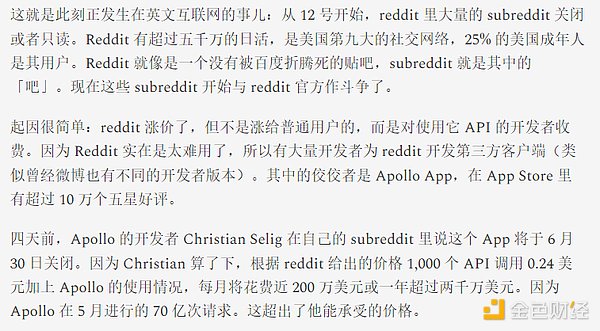
But at the same time, Web3 socialization has become a hot keyword, and “decentralized socialization” has become one of the top ten focus areas of the top institution LianGuairadigm. Although Web3 socialization is not a new narrative, in the current context where Web2 platforms frequently experience data leaks, privacy controversies, and algorithm biases, Web3 socialization with characteristics such as decentralization, resistance to censorship, user-centricity, empowerment of digital assets, and identity interoperability has gradually gained more attention.

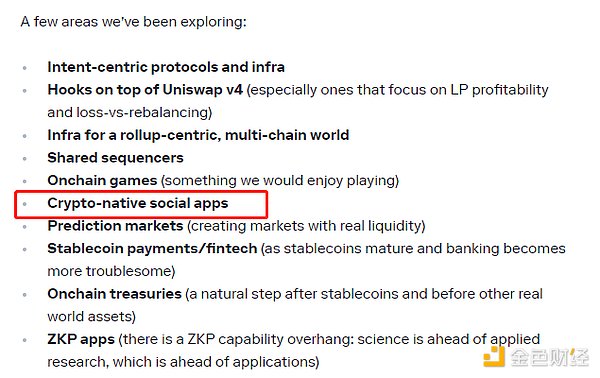
1. Current Status of the Social Track
1.1 High Ceiling of the Social Track
Social products have great imagination in the capital market. According to the “Global Digital Overview 2022” report, the global social media users exceed 4.62 billion, equivalent to 58.4% of the global population. Taking Facebook, the leading company in the track, as an example, its peak market value exceeded $1 trillion and was once among the top ten listed companies globally.
According to Facebook’s fourth-quarter 2022 financial report, the average daily active users (DAU) of Facebook products worldwide is nearly 3 billion, accounting for one-third of the global population. In addition, the valuations and market values of various social operating companies such as Twitter, Snapchat, and Weibo indicate that the ceiling of the social track is extremely high. Considering the small user base of Web3 socialization at present, the growth space of the social track is obviously huge.
1.2 Continuous Growth of Global Social Media Users, but Growth Rate is Slowing Down
Since the global popularization of Internet infrastructure, the number of social media users has shown rapid growth, especially during the Covid-19 period, the adoption of social media has been greatly accelerated.
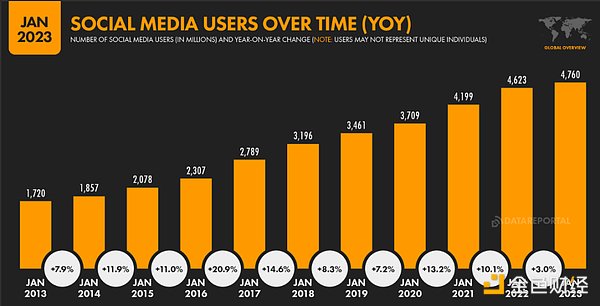
According to Kepios data, global social media users have grown by nearly 30% in the past three years, with a net increase of over 1 billion people. However, as countries lift epidemic restrictions and relax population movement control, socialization returns to offline, and the growth rate of social media adoption has significantly slowed down. In the context of weak growth in social media, Facebook has shifted its strategic direction to the metaverse.
1.3 Problems with Current Web2 Social Platforms
Although social software companies have clear information management regulations and laws in different countries or regions, there are still problems such as censorship confusion, algorithm bias, data abuse or leakage, and so on. From Facebook’s “election gate” incident to Reddit’s forced API fees that sparked backlash from developers, to Musk’s Twitter throttling “anti-addiction” causing public anger, these phenomena reflect that Web2 social software companies driven by profit cannot prioritize users. User data can be used by big companies, forming profiles of users and making it difficult for people to abstain from addiction to social software.
2. The Value of Web3 Social
2.1 Value and Power Redistribution
Since the emergence of the Internet, social products have always revolved around the interests of three parties: users, platforms, and creators, which actually involve an impossible triangle. In the Web2 social model, platforms are at the top of the food chain, but with the advent of Web3 social, the value/power distribution relationship among the three parties has changed.
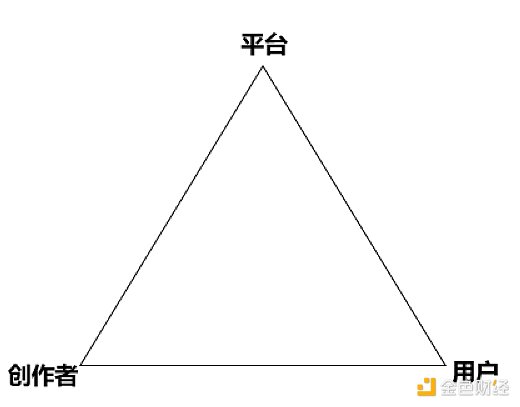
User sovereignty: Web3 social revolutionizes the paradigm of social ownership, helping users regain sovereignty. By bringing the anti-censorship characteristics of user data on the chain and decentralization of nodes, user sovereignty is guaranteed, including ownership of data such as consumption and browsing preferences, privacy rights, digital assets, and identity.
In addition, in some Web3 products, users can also exert their own initiative, such as co-owning content works on Mirror to receive royalties, participating in transaction decision-making in sports and entertainment clubs by holding tokens on Chiliz, and so on.
Reshaping the creator economy: In Web2 social products, platforms such as Weibo and Twitter will share platform revenue with creators, but there are generally high thresholds, low income, and 2/8 distribution of income. Taking Twitter’s recent incentives for content creators as an example, in addition to the harsh condition of accumulating 5 million views of tweets in 3 months to be eligible for revenue sharing, you also need to subscribe to Twitter Blue.

However, driven by Web3 social products, content creators have become “real workers” instead of being “alienated individuals.” The Write To Earn model provided by Web3 platforms allows creators to monetize platform tokens based on quantifiable data such as clicks and reposts of their works, and also provides additional income channels for creators like Lens. In addition, with the traceability provided by Web3, if creators mint NFTs while publishing content, copyright protection can also be ensured.
2.2 Decentralized Governance
Unlike traditional social media platforms that have absolute governance rights, a considerable part of governance rights in Web3 is decentralized to the community. By handing over content review and ownership to the community, it avoids the abuse of content review and deletion rights by platforms manipulated by capital or power concentration. Users can allocate governance rights by holding NFTs or tokens, making decisions on suitable review processes or standards, and the process becomes more democratic and transparent.
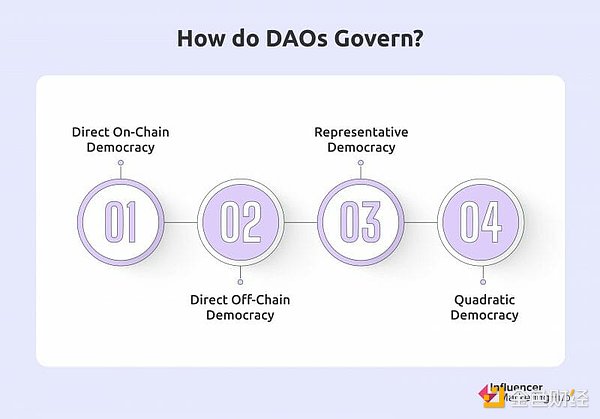
2.3 Decentralized Identity Interoperability
In traditional Internet social networks, there are strong barriers to connecting identities between different products. Users seem to be in data silos, as identity credentials from Tencent and Alibaba’s products cannot be interoperable. Users need to constantly register and verify their identities in different ecosystems in order to circulate on different platforms. The lack of interoperability among multiple platforms has become a pain point for Web 2.0 digital identities.
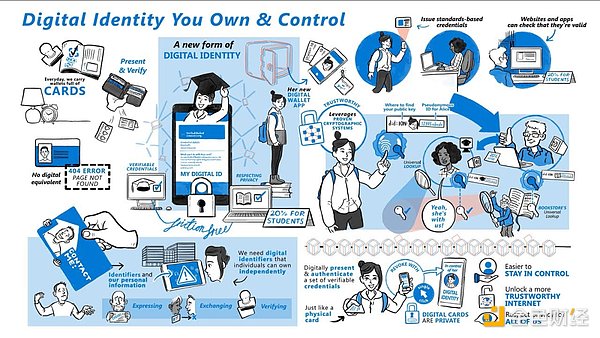
In the Web3 social scenario, only one digital identity is needed to experience a variety of scenes in more composable and open protocols. For example, users can use the same ID identity in CyberConnect and Lens Protocol to experience various social behaviors such as video viewing, image-text socializing, and instant messaging.
3. Analysis of Web3 Social Platforms
Web3 social is a broad term mainly referring to Web3 technology and related social products. Due to limited space, this article will divide Web3 social projects on the market into infrastructure and application categories, and briefly analyze them.
3.1 Infrastructure
Lens Protocol
Lens Protocol is a decentralized social graph built by the Aave team on the Polygon chain, with NFT as the core of interaction. It is one of the mainstream Web3 social protocols.
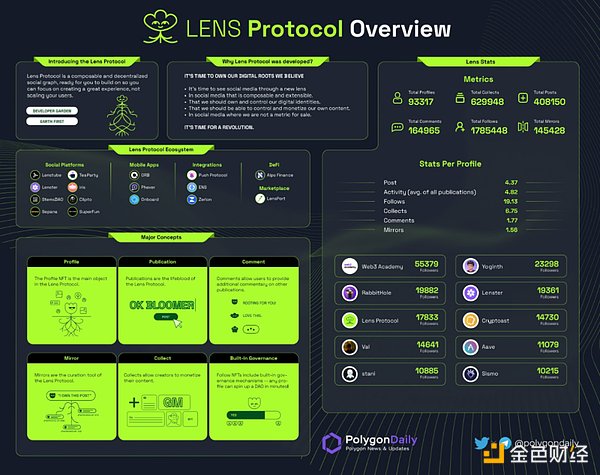
To participate in Lens, users first create a personal profile NFT (Profile NFT). This NFT is the main interactive object. Users who hold Profile NFT can create content, and the created content will be recorded on the Profile NFT and stored on the blockchain.
The interactive behaviors that Lens users can engage in include creating content, collecting, sharing, etc. Among them, content creation (Publication) is the core of Lens interaction. Content creation can be divided into posting, commenting, and mirroring. Posting is the main function, while commenting and mirroring are additional functions. Creators can monetize their published content and generate income through e-commerce, knowledge payment, and other forms on Lens.
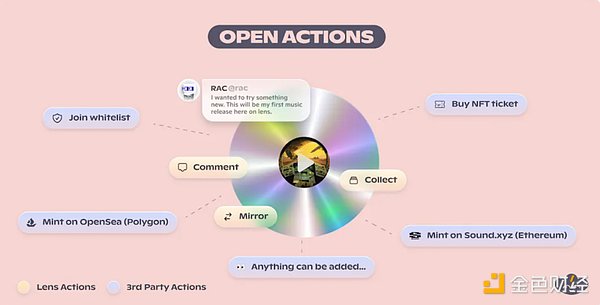
Other users can follow the creator’s homepage to obtain Follow NFTs and collect the content published by the creator to obtain Collect NFTs. Most of the users’ social interaction behaviors will be preserved and stored on the blockchain in the form of NFTs, ensuring data ownership.
Thanks to the modular design of Lens and the open developer environment, there are already over 100 ecological products. Due to the composability of Lens Profile NFT, the more products there are, the more diverse application experiences there will be. Users can also port their own data to applications, including social applications such as Lenstube, Lenster, Phaver, LensFrens, which cover music, videos, and image-text content. Most of these DApps have similar operation logic to mainstream Web2 social products, so users can seamlessly transition to new applications.
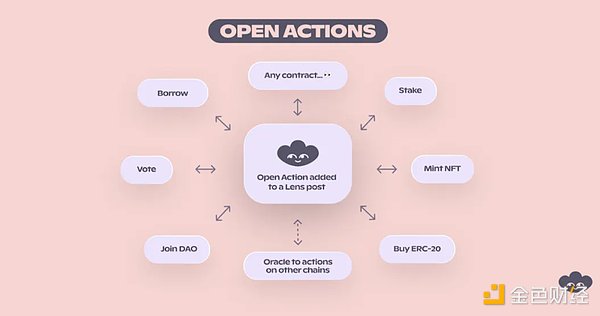
However, Lens Protocol still has certain limitations. For example, each operation needs to be recorded on the blockchain and consumes gas fees, and it is limited to the Polygon chain. In addition, since Lens hopes to attract high-quality users in the early stages of the project, the available quota has been relatively small since the end of last year. Currently, there are about 100,000 circulating Profiles NFTs, which is still a small circle game. This situation may improve as Lens is about to launch the V2 version registration.
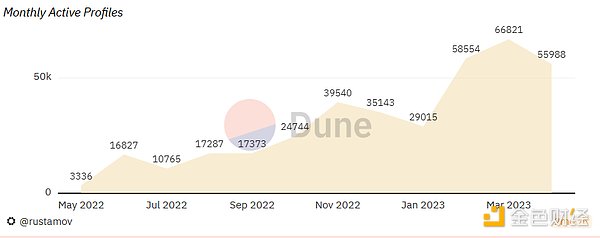
CyberConnect
CyberConnect is a decentralized social graph protocol and one of the leading projects in the Web3 social field.
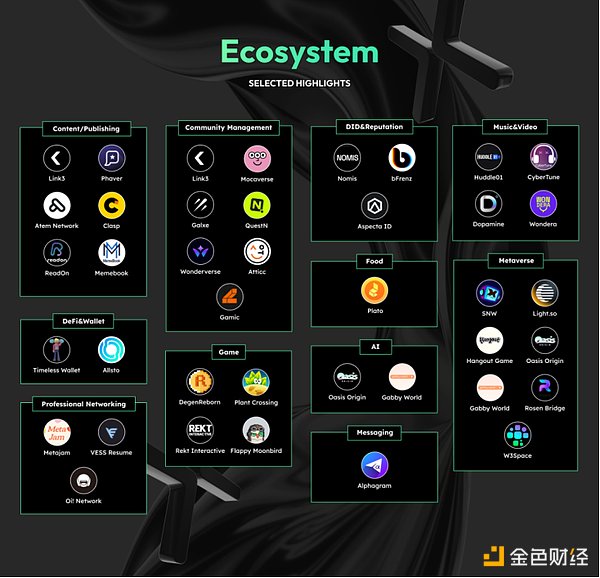
CyberConnect has three core components, including CyberProfile (decentralized digital identity), CyberConnect Social Graph (social relationship graph), and CyberWallet (wallet).
Similar to the Lens Protocol, CyberConnect’s core is to return the interactive data to users and the cc Profile (personal profile NFT), helping users build their social graph. The NFT has composability and can freely flow within the ecosystem. It has already integrated multiple high-quality applications such as Link3, Phaver, and ReadON. As the official application of CyberConnect, Link3 covers various functions such as social interaction, content publishing, community, and task publishing.
When the CyberConnect protocol is connected to different applications, it can directly bring user data to other applications, such as friend data, identity data, and whether to authorize data access depends on the user. However, some community members have raised concerns about the privacy risks of displaying the captured user data on the personal interface.
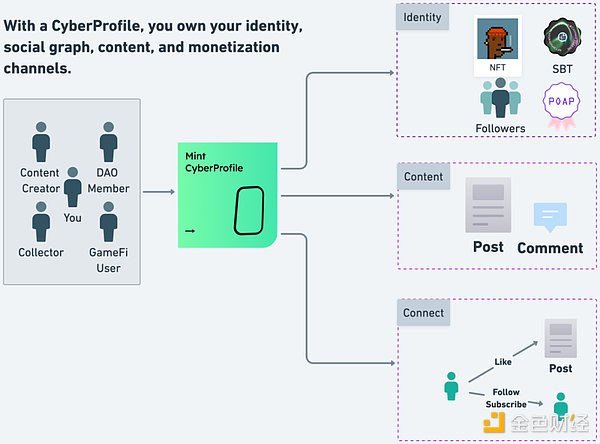
Unlike the Lens Protocol, which can only be used on the Polygon network, CyberConnect has better scalability. It supports aggregation of multiple chains such as Ethereum, BSC, Solana, and Polygon. Furthermore, CyberConnect does not strictly restrict user access thresholds. Currently, more than 1.2 million users have registered their Profile NFT, and the number of monthly active addresses accounts for 70% of the total addresses. However, after CyberConnect announced its token issuance plan, there has been a decline in activity and user registrations.
In addition to the two leading Web3 social infrastructure protocols mentioned above, other Web3 social infrastructure projects such as Farcaster, Deso, and Nostr are also worth paying attention to.
Social Application Layer 3.2
Mirror
Mirror is an anti-censorship content creation platform launched by A16Z partner Denis Nazarov, and it is also one of the mainstream platforms for content creation in the current Web 3 field. Mirror’s core principle is “user-created, user-owned.” Each time a creator publishes an article, it is minted into an NFT and the created NFT is stored on the Optimism network and can be archived on Arweave for permanent storage.
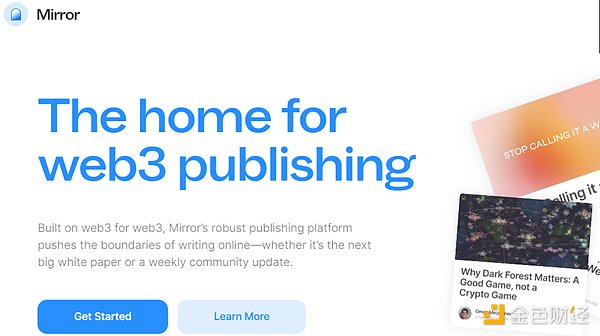
Creators can earn income on Mirror through crowdfunding, auctions, and collaborative contributions. However, Mirror also has some shortcomings for creators, such as the lack of content review, no guarantee of content accuracy, frequent bugs when editing articles, and inadequate solutions to plagiarism and copyright infringement.
Debox
Debox is a Web3 social platform based on DID. Its application interface is similar to WeChat, and its functionality is similar to Discord and Twitter. The main features of Debox are as follows:
-
Chat: Users can chat directly within the community. It is worth mentioning that Debox provides the option of joining a group based on asset holdings. Only users who hold the assets of the community can enter and rank based on the holding amount, which reduces irrelevant information to some extent.
-
Feed: Similar to the Twitter feed, it can be divided into user-followed and recommended squares. Users can post updates, comment, like, and collect posts in this section.
-
Community: Debox divides the community into Token Community, NFT Community, and Clubs, and users can join communities based on their preferences.

In addition, Debox also adds unlimited members in the group, provides community management tools such as voting, proposals, Token authorization detection for users, NFT transactions, and other functions to improve convenience of use.
Damus
Damus is a social application created based on the decentralized social basic protocol Nostr. Damus sets up features such as notes (similar to the homepage square of Twitter), private messages, notifications, search, etc., providing a similar experience to Twitter. When users create an account, it generates a public key and a private key for identity verification. The creation of content does not require review and there is no risk of deletion. It has strong resistance to censorship and is fully owned by the user.
With the celebrity effect of former Twitter CEO Jack Dorsey, Damus and Nostr gained great attention within a few days of their launch. However, due to the lack of regulation and becoming a platform for the release of junk information, the activity of the application decreased significantly.
4. Dilemma of Web3 Social
4.1 Login barriers limit new user influx
For a new Web3 user, there are two main barriers to enter Web3 social.
On the one hand, there is a wallet barrier. For new users, they need to have awareness of private keys, public keys, mnemonic words, etc., and there are significant differences in the native assets used for gas fees on different chains. However, with the popularization of MPC or AA wallets, this barrier will gradually decrease.
On the other hand, there is a cognitive barrier. Compared with mainstream Web2 social applications, Web3 social interaction behaviors consume gas fees and require an understanding of a series of terms such as POAP, ENS, and NFT.
4.2 Web3 social lacks breakout effect applications
Web3 social products have poor marketing effects and limited marketing capabilities. Even the leading Web3 social platforms Lens Protocol and CyberConnect are the same. Lens Protocol has a small number of registrations and lack of scale effects in community promotion. CyberConnect has been criticized by the community for frequent excessive marketing activities and participating in “picking bottle caps”, resulting in a poor reputation.
The habit of paying has not been formed. Most users are accustomed to using mainstream Web2 social products for free, and they do not understand the mode of social interaction in Web3 social products, which requires purchasing Profile NFT and paying gas fees for interaction.
Most Web3 social applications simply copy the template of Web2 social platforms without significant innovation. Without important needs for the majority of users or creators, their efforts to solve pain points have limited appeal to users.
4.3 Web2 social application user stickiness is still strong
Due to the first-mover advantage of traditional social media, Web2 social applications not only have a large user base but also have long-term active users.
For non-Web3 users, this group of users has already established a mature relationship circle in Web2 social products. It is difficult for them to abandon their original social capital and enter unfamiliar products. It is challenging to divert these users to Web3 social.
For native Web 3 users, in the absence of other major needs, using Web 2 social applications such as Twitter, Discord, and Telegram can actually meet their needs.
However, for social products, the scarcity of users and creators will eventually lead to insufficient generative capacity, which is fatal.
4.4 Can a lack of strong regulation form good community norms?
There are widespread doubts about whether Web3 social can form reasonable community norms while allowing freedom of speech and access to information, and strike a balance between freedom and fairness. The decentralized social media application Damus, strongly supported by former Twitter CEO Jack Dorsey, was flooded with a large amount of borderline pornography or financial fraud content shortly after its release, becoming a “social garbage dump” in the absence of review and regulation.
Although former US President Trump was banned from major Web2 social media platforms such as Twitter and Facebook, most people still supported this move because his extreme nationalism and anti-common sense speech were not further spread.
In most decentralized social platforms, due to the lack of censorship, moral or legal norms, the spread of garbage content becomes quite easy. Against the backdrop of rising global populism, nationalism, and extreme religious forces, teams or communities of Web3 social products need to take responsibility and provide methodologies to guide and correct misinformation across different national customs, religious beliefs, violent content, etc.
5. SocialFi (X To Earn) is not the ultimate answer
Web2 social products do not achieve long-term success solely by relying on the WRITE TO EARN model to attract users. They also rely on the presence of long-term high-quality content. Although the X TO EARN model can incentivize user activity for a certain period of time, it is not very effective in sustaining long-term user attraction, just like most Gamefi projects. For example, the popular Socialfi project Monaco Planet in late 2021 spawned a large number of “carpet-bagging” accounts that pursued token rewards for the sake of creating content, resulting in a large amount of invalid redundant information on the platform. This model has strong Ponzi attributes, and when the earnings decrease, user activity will decrease significantly. Lack of high-quality content in the competition of social media platforms is equivalent to losing the moat, which is currently lacking in decentralized social platforms and is also why most Socialfi projects have short lifecycles and ultimately fail to attract attention.
In terms of product innovation, each WebX social revolution has given birth to a new form of social product, from portal websites to social media platforms. Web3 products should not be limited to adding financial attributes to the Web2 product model.
Build social products based on niche interests and focus on common interests. Due to factors such as login barriers and social scenes, the opportunity for Web3 social products to become popularized is far less than that of Web2 social products. However, efforts can be made to target differentiated niche groups, such as attracting sports fans with platforms like Chiliz and gathering music-loving creators with platforms like Audius.
Attracting high-quality content creators and users, whether in Web2 or Web3, good social products require a long-term accumulation of both the quantity and quality of users and creators.
In addition, mobile development needs to be emphasized. There is a high demand for social mobile applications in the market, but currently, most Web3 social products are developed for web browsers, neglecting the demand for vertical screen orientation.
According to Triple-A data, there are approximately 420 million cryptocurrency users, accounting for less than 5% of the global population. Compared to the global population of Web2 social users, this number is quite small. Even for top protocols like Cyberconnect, the user count is still maintained at around 1 million, and a considerable portion of them are individuals with multiple accounts for airdrop expectations. In the social track, the user count of top protocols is only at the level of a newborn baby. In the “fat protocol, thin application” Web3 environment, it is even more difficult for killer-level social applications to emerge. Based on the current situation, the possibility of Web3 social applications occupying a niche in the social track is greater.
References:
https://datareportal.com/reports/digital-2023-global-overview-report
Like what you're reading? Subscribe to our top stories.
We will continue to update Gambling Chain; if you have any questions or suggestions, please contact us!